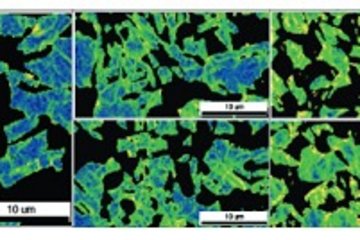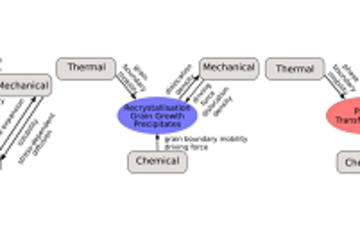All genres
1.
Journal Article
Deep active optimization for complex systems. Nature Computational Science 5 (9), pp. 801 - 812 (2025)
2.
Journal Article
Decomposition-resistant carbonitride precipitates in X30CrMoN15-1 high-nitrogen bearing steel deformed by high-pressure torsion. Materials Science and Engineering A: Structural Materials Properties Microstructure and Processing 863, 144529 (2023)
3.
Journal Article
Mechanism of cementite decomposition in 100Cr6 bearing steels during high pressure torsion. Acta Materialia 201, pp. 79 - 93 (2020)
4.
Journal Article
Microstructural origin of the outstanding durability of the high nitrogen bearing steel X30CrMoN15-1. Materials Characterization 159, 110049 (2020)
5.
Talk
On the decomposition resistance of carbonitride precipitates during high-pressure torsion in X30CrMoN15-1 bearing steel. High Nitrogen Steel conference, HNS 2021, online, Shanghai, China (2021)
6.
Talk
Mechanism of cementite decomposition in 100Cr6 bearing steels during high pressure torsion. MSE Congress 2020, virtual, Sankt Augustin, Germany (2020)
7.
Talk
Investigation of cementite dissolution in 100Cr6 bearing steel under high pressure torsion (HPT). Materials Science and Engineering congress, MSE 2020, online, Darmstadt, Germany (2020)
8.
Talk
The role of carbon in the formation of white etching cracks. Thermes 2018 Annual Meeting & Exhibition, Paris, France (2018)
9.
Thesis - PhD
Microstructure alterations in bearing steels exposed to severe plastic deformation. Dissertation, RWTH Aachen University (2020)
10.
Thesis - Master
Effect of post-heat treatment on the microstructure and mechanical properties of SLM-produced IN738LC. Master, RWTH Aachen, Aachen, Germany (2017)











